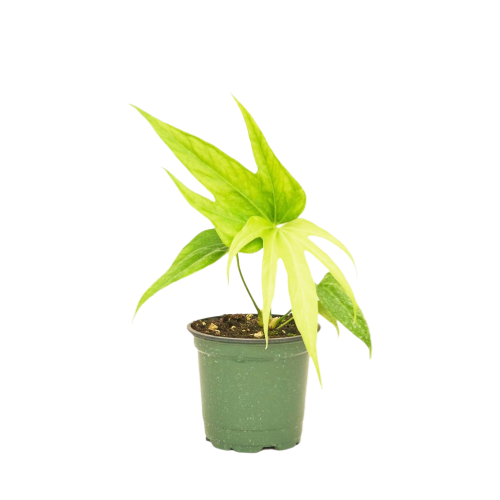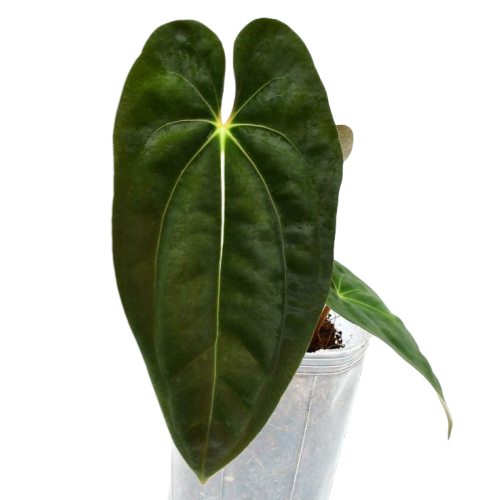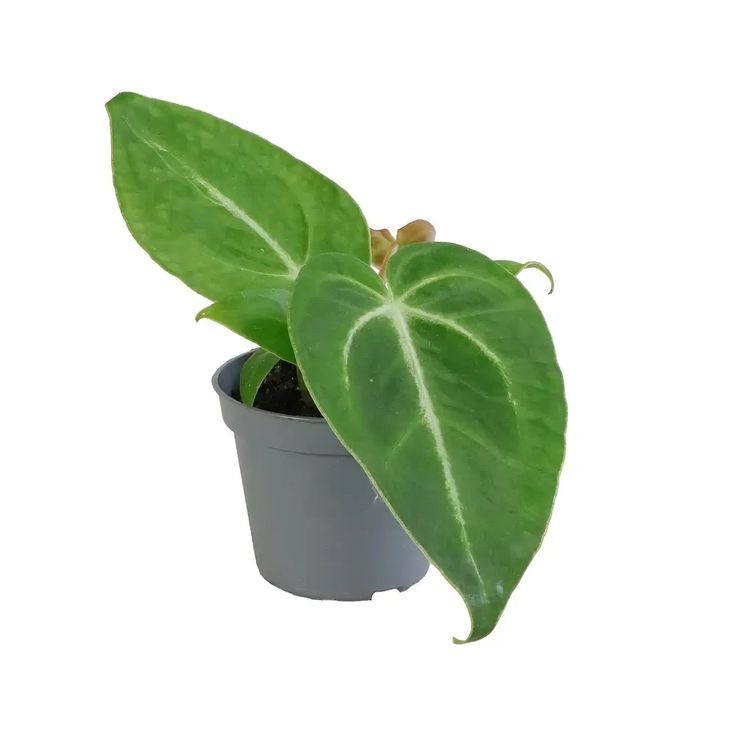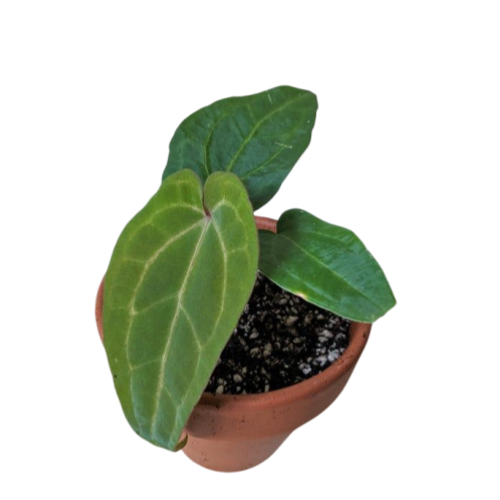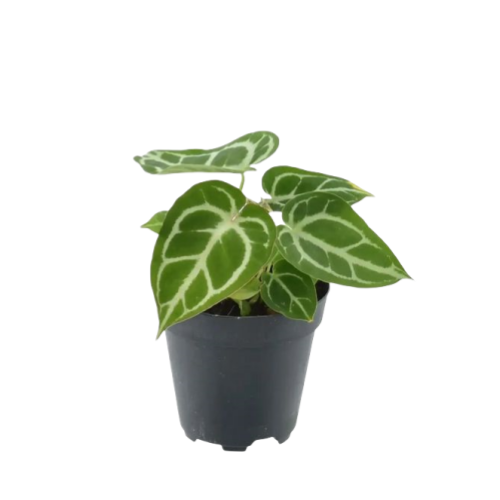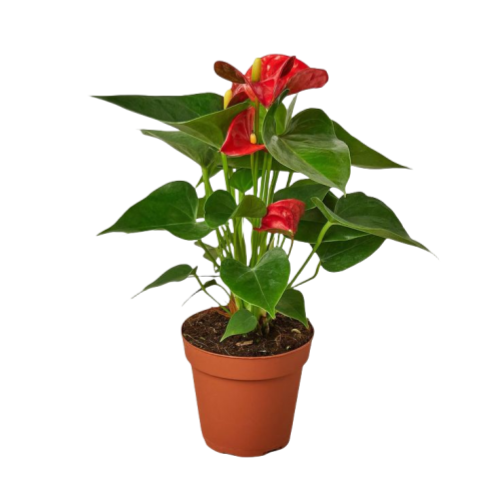Anthurium Superbum
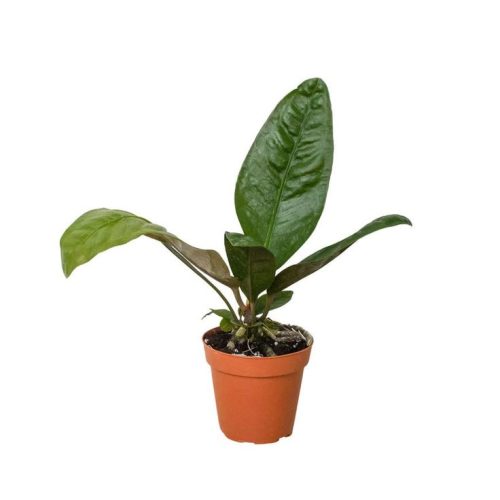
- Botanical Name: Anthurium Superbum Madison
- Family Name: Araceae
- Ị ga: 3-5 inches
- Okpomoku: 18℃-24℃
- Other: warmth, indirect light, and humidity
Nlebazi anya
Nkọwa nke ngwaahịa
Mgbọrọgwụ Jungle: Kedu ka anturium superbum si chọta ya perch
Ecuadorian Ecuater: Odide Roreal of nke anthurium superbum
Anthurium Superbum, also known as the Bird’s Nest Anthurium, claims the misty lowland forests of Ecuador as its native home. This tropical fern ally flourishes at moderate elevations, typically between 650 to 1,150 feet (200 to 350 meters), where the air is thick with moisture and the undergrowth is lush with life. In these forests, the Anthurium Superbum has evolved to become a master of aerial living, an epiphyte that dances gracefully among the branches.
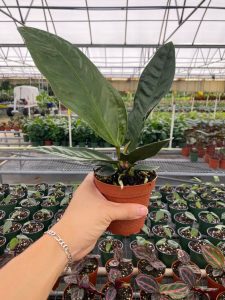
Anthurium Superbum
Dị ka epiphyte, anthurium superbum nwere omume na-enweghị atụ. Ọ na-eme ka ogbugbo nke osisi ndị ọzọ, na-eji ya ariail mgbọrọgwụ ọ bụghị iji wepụta ala ma na-aga na ogwe osisi nke ndị agbata obi ya. Mgbakwunye ndị a, na-abụkarị pink ma sie ike, na-enwe ike ịmịcha nri ọ bụghị naanị site na ihe na-emebi emebi gburugburu ha kamakwa site na ikuku.
The plant’s unique ability to grow without soil makes it a botanical wonder, showcasing nature’s ingenuity in the diverse ways plants can thrive. In its natural habitat, Anthurium Superbum’s rosette of stiff, leathery leaves forms a bowl-like structure that collects rainwater and debris. This natural basin not only provides a reservoir for the plant during the dry spells but also creates a miniature ecosystem that supports a variety of forest critters.
The Anthurium Superbum’s adaptation to its forest ecosystem is a testament to its resilience and versatility. It stands as a silent sentinel in the Ecuadorian lowlands, its leaves reaching out to form a protective nest that invites life to flourish within its embrace. This plant is not just a passive observer in its environment but an active participant, shaping its own survival story in the eternal ballet of the rainforest.
Akwukwo nyocha: Quirkours nke enyi anyị
This plant is known for its long, stiff leaves that fan out to form a bowl shape, resembling a bird’s nest, hence its nickname. The leaves are elliptical to oblong-elliptic, with a dark purple-green color on the front and occasionally purple or red on the back. The plant’s inflorescence is erect and shorter than the leaf, with a white spadix that turns rose, and a green spathe. It bears purple berries。
Ọnọdụ iru mmiri ma ọ bụ ebe obibi Ebe osisi a kpọrọ ụlọ
Anthurium Superbum na-eto eto na elu iru mmiri na oke okpomọkụ. Ọ na-ahọrọ ìhè na-egbu maramara mana enwere ike ịnagide ọnọdụ ọkụ dị ala. A na-ahụkarị ahịhịa ahụ maka iru mmiri ma nwee ike ijikwa ọkwa iru mmiri ụlọ, ọ bụ ezie na ọ ga-enwe ekele maka iru mmiri dị elu nke nwere ike ịgba uto ahihia.
Green Ekworo: The Anthurium Superbum’s Secret Celebrity Status
Ecuadorian Ecuater: Odide Roreal of nke anthurium superbum
Anthurium Superbum, also known as the Bird’s Nest Anthurium, claims the misty lowland forests of Ecuador as its native home. This tropical fern ally flourishes at moderate elevations, typically between 650 to 1,150 feet (200 to 350 meters), where the air is thick with moisture and the undergrowth is lush with life. In these forests, the Anthurium Superbum has evolved to become a master of aerial living, an epiphyte that dances gracefully among the branches.
Dị ka epiphyte, anthurium superbum nwere omume na-enweghị atụ. Ọ na-eme ka ogbugbo nke osisi ndị ọzọ, na-eji ya ariail mgbọrọgwụ ọ bụghị iji wepụta ala ma na-aga na ogwe osisi nke ndị agbata obi ya. Mgbakwunye ndị a, na-abụkarị pink ma sie ike, na-enwe ike ịmịcha nri ọ bụghị naanị site na ihe na-emebi emebi gburugburu ha kamakwa site na ikuku.
The plant’s unique ability to grow without soil makes it a botanical wonder, showcasing nature’s ingenuity in the diverse ways plants can thrive. In its natural habitat, Anthurium Superbum’s rosette of stiff, leathery leaves forms a bowl-like structure that collects rainwater and debris. This natural basin not only provides a reservoir for the plant during the dry spells but also creates a miniature ecosystem that supports a variety of forest critters.
The Anthurium Superbum’s adaptation to its forest ecosystem is a testament to its resilience and versatility. It stands as a silent sentinel in the Ecuadorian lowlands, its leaves reaching out to form a protective nest that invites life to flourish within its embrace. This plant is not just a passive observer in its environment but an active participant, shaping its own survival story in the eternal ballet of the rainforest.
Window na-eche ma ọ bụ ịsa ahụ Ntụpọ zuru oke maka ogwe osisi gị
Osisi a kwesịrị ekwesị maka ntọala ime ụlọ, karịsịa nso na mpaghara ugwu ma ọ bụ nke ọwụwa anyanwụ ebe enwere ike ịnweta ọtụtụ ọkụ na-enweghị isi. Enwere ike itinye ya n'ime ụlọ ịsa ahụ ma ọ bụ ebe iru mmiri ndị ọzọ nke ụlọ. N'èzí, ọ nwere ike toro na USDA Hard Monnes 10A na 11, nyere ya nwere nchebe pụọ na anwụ anwụ na oyi.
Akpiri kpọrọ nku? Ọ bụchaghị: The Lazy Gardener’s Guide to Watering Wisdom
One of the unique aspects of Anthurium Superbum is its ability to tolerate lower humidity and less frequent watering due to its thick leaves and robust roots. It also has a slow growth rate, which makes it a low-maintenance addition to any garden. The plant’s air-purifying properties and its tolerance to a range of conditions make it an excellent choice for those seeking a hardy, visually impressive houseplant。





